Alfa Romeo Alfetta GT/GTV - Buyer's Guide





















|

|

|

|

|

|

|

|

|

|
Rekindling a famous model name the Alfetta was intended to modernise rather than replace the 105 series
The Alfetta GT was intended to modernise rather that replace the 105 Series GTV, however the result was a car significantly different in character and design.
Rekindling a famous Alfa Romeo model name, the Alfetta began life as a sedan then in 1975 a two-door hatchback GT joined the range. Although the 105 Series already was using a 2.0-litre engine, the Alfetta reverted briefly to a 1.8-litre.
In 1977 the twin-cam 1.8 made way for the familiar and more powerful 2.0-litre, with 90kW and slight improvements to acceleration and top speed.
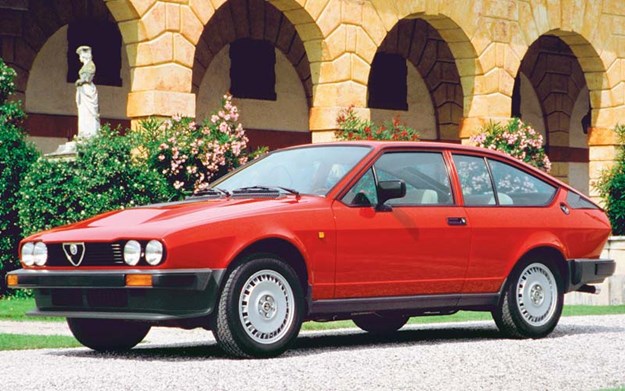
The Alfetta dashboard was modular and designed with an intent to make the car feel trendy and modern. However, swapping modules when adapting the dash for right-hand drive markets resulted in a layout that was clumsy and impractical.
Alfa fitted its new GT with rack and pinion steering, front torsion bars and independent rear suspension. To assist with weight distribution, the five-speed gearbox was mounted adjacent to the differential.
| Read next: Alfa Romeo Giocattolo review
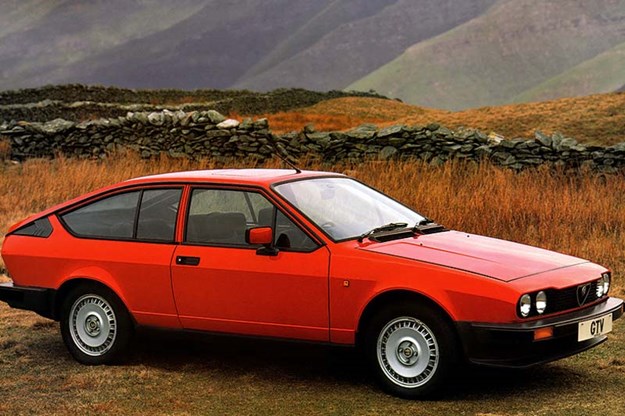
The remote selector action made changes indecisive and hard to achieve with the same precision as in earlier cars. Weak synchromesh caused crunches on down-shifts and the condition worsened as the clutch and transmission deteriorated.
Early GTs sat on steel rims and skimpy 165 section radials. Wider alloys and lower profile tyres that put an extra 20-30mm of rubber on the road helped to alter the ‘nervous’ handling of early cars.
Increasing front tyre pressures slightly was said to reduce understeer.
| Past Blast: 1970 Alfa Romeo GTV 1750
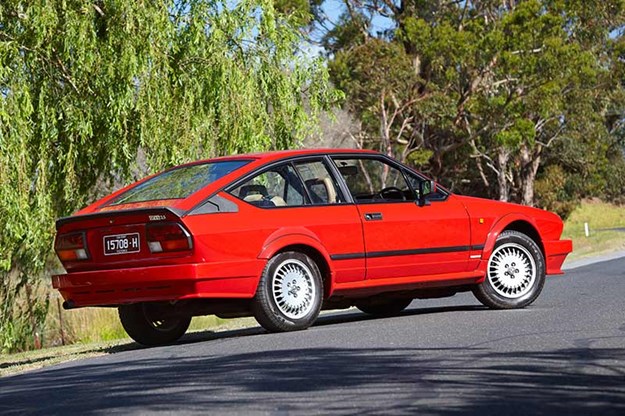
1981 brought an unhappy restyle dominated by lumpy and hideous polyurethane bumpers. They were meant to protect the car from damage in collisions at up to 8km/h but minor bumps below this speed saw mountings break and components crack.
Far better was the news from 1980 of a 2.5-litre GTV6. These could be identified by a mid-bonnet air-intake and 15 inch alloy wheels. A tough car that could be made to perform well; GTV6s ran at the pointy end of Australian and European Touring Car events and in 1987 was the last rear-wheel drive car to win the Australian Rally Championship. Mechanically the V6 used a stronger diff, gearbox and drive-shafts. Interior changes at last grouped major instruments in front of the driver.
| Watch next: Alfa Romeo SZ - video
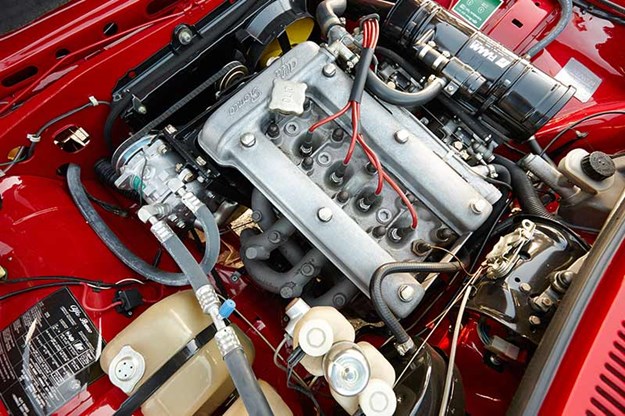
With either engine, the Alfetta-based GTV was a practical car. Rear legroom wasn’t immense but two and even three people could fit for short journeys. Some cars spent their lives with the back seat folded flat to provide a generous luggage platform.
GTV2000s remain available in decent numbers but they haven’t matched the growth enjoyed by 105 Series cars. Prices paid currently peak in the low $20,000s with the GTV6 climbing at a faster rate and reaching $40,000. Quality is essential as these cars are very easy to over-capitalise.
| 2018 Market Review: Alfa Romeo 1963-1987

2019 VALUE RANGE: Alfa Romeo Alfetta GTV6
Fair: $10,000
Good: $25,000
Excellent: $40,000
(Note: exceptional cars will demand more)
BUYER'S CHECKLIST

BODY & CHASSIS
Some owners insist that their cars have suffered little or no corrosion over their lifetimes, but an on-hoist inspection is vital prior to purchase. Front mudguards, door sills, wheel-arch lips and the
front apron are spots to examine first for bubbling and evidence of filler. Older restorations may be suffering from renewed corrosion and certainly from deterioration to paint and brightwork. Repair
panels including wheel-arch and lower mudguard sections, floors and sills are available but join an Alfa Club and seek guidance from other owners. Some products are of suspect quality and any saving on
price can be swallowed by the cost of making a poorly-stamped panel fit. Spare bumpers are hard to find and new headlights have been offered at more than $150 each.
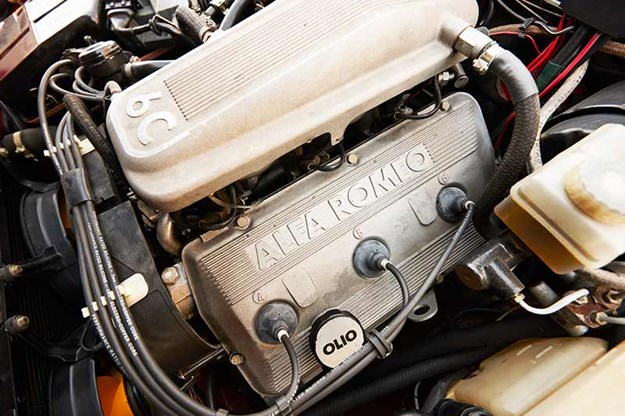
ENGINE & TRANSMISSION
For all of their twin-cam complexity, well-maintained Alfa-Romeo engines can provide years of reliable motoring. Buy one that’s been ‘cooked’ or run low on oil though and the result will be costly. Oil
that’s contaminated with coolant, exhaust smoke and breather fumes are signs an overhaul, or at least a reconditioned cylinder head, is due. Clattering when starting from cold indicates a worn timing
chain or camshaft. Fuel-injected cars needing a service will blow black smoke when starting. Misfiring can be due to cracked spark plug leads. The Alfetta gearbox can be difficult even in perfect
condition and with minor wear becomes reluctant to engage second gear without a ‘double-shuffle’. Rattles and heat through the gear-lever characterise a transmission that’s overdue for an overhaul.
SUSPENSION & BRAKES
Rear-wheel steering and instability under brakes are likely due to worn bushes in the rear suspension. If the wheels ‘splay’ inspect the inner edges of tyres for wear. Neglect will often lead to trashed
shock absorbers and a tendency for cars to leap across the road after hitting a mid-bend bump. New gas units all round will cost less than $800. Shuddering or pulsing under light pedal pressure points to
warped discs. A sinking pedal can signify a failing master cylinder, vacuum hose leaks or a power booster needing a $400 rebuild.

INTERIOR & ELECTRICAL
Sun is the enemy of Alfa interiors. Even when new, plastics that were better suited to European conditions quickly curled up their corners or developed cracks. Look for splits in the dash and console,
warped door trims, deterioration of switches and seat belt fittings. Correct seat material is scarce, as are authentic steering wheels which may have been replaced by an after-market wheel. With the
engine running, activate a few electrical items simultaneously and watch if headlights pulse in unison with the indicators or instruments flicker when the high-beams are switched on.
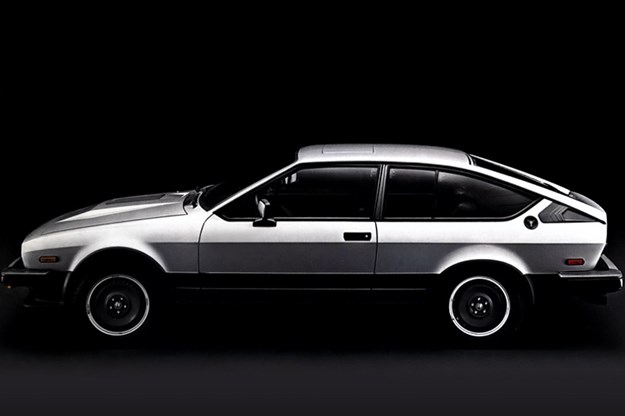
1975-1987 Alfa Romeo Alfetta GT/GTV specs
NUMBER BUILT: 114,963 (GTV 1.8/2.0) 22,616 (GTV6)
BODY: steel integrated body/chassis two-door coupe
ENGINE: 1779cc or 1962cc in-line four-cylinder, 2492cc V6 with overhead camshaft,
twin side-draft carburettors or fuel injection.
POWER & TORQUE: 90kW @ 5500rpm, 170Nm @ 4000rpm (2000GTV)
PERFORMANCE: 0-100km/h:
10.7 seconds, 0-400 metres
17.2 seconds (2000GTV)
TRANSMISSION: 5-speed manual, 3-speed automatic
SUSPENSION: Independent with torsion bars, anti-roll bar (f); Independent with coil springs, locating arms, Watts linkage (r)
BRAKES: Disc (f) disc (r) with power assistance
TYRES: 185/70H14 radial
Unique Cars magazine Value Guides
Sell your car for free right here
Get your monthly fix of news, reviews and stories on the greatest cars and minds in the automotive world.
Subscribe

.jpg)










